Introduction to Stopping Conditions
Part B: Stopping Conditions
Introduction
In the preceding section, we introduced an algorithm designed to construct a decision tree. This algorithm incorporates a specific feature known as a stopping condition.
Question:
Question: If we don’t terminate the decision tree algorithm manually, what will the leaf nodes of the decision tree look like?
Question:
Question: How can we prevent this from happening?
Show Answer
Answer: Stop the tree from growing.
Common Stopping Conditions
The most common stopping criterion involves restricting the maximum depth (max_depth) of the tree.
The following diagram illustrates a decision tree trained on the same dataset as the previous one. However, a max_depth of 2 is employed to mitigate overfitting.
Four other common simple stopping conditions are:
- Do not split a region if all instances in the region belong to the same class.
- Do not split a region if it would cause the number of instances in any sub-region to go below a pre-defined threshold (
min_samples_leaf). - Do not split a region if it would cause the total number of leaves in the tree to exceed a pre-defined threshold (
max_leaf_nodes). - Do not split if the gain is less than some pre-defined threshold (min_impurity_decrease).
Let's look at each one individually.
1. Do not split a region if all instances in the region belong to the same class.
The diagram below displays a tree where each of the end leaf nodes are clearly of the same class, therefore we can stop at this point in growing the tree further.
2. Do not split a region if it would cause the number of instances in any sub-region to go below a pre-defined threshold (min_samples_leaf).
In the following diagram, we set min_samples_leaf to be 4, and we can observe that we can't split the tree further because each leaf node already meets the minimum requirement.
3. Do not split a region if it would cause the total number of leaves in the tree to exceed a pre-defined threshold (max_leaf_nodes).
In the diagram below, we observe a tree with a total of 3 leaf nodes, as specified as the maximum.
4. Do not split if the gain is less than some pre-defined threshold (min_impurity_decrease).
Compute the gain in purity of splitting a region R into R1 and R2 :
Note:
M is the classification error, Gini index, or Entropy, depending on which one we have chosen to use.Scikit-learn (sklearn) grows trees in depth-first fashion by defaul, but when max_leaf_nodes is specified it is grown in a best-first fashion.
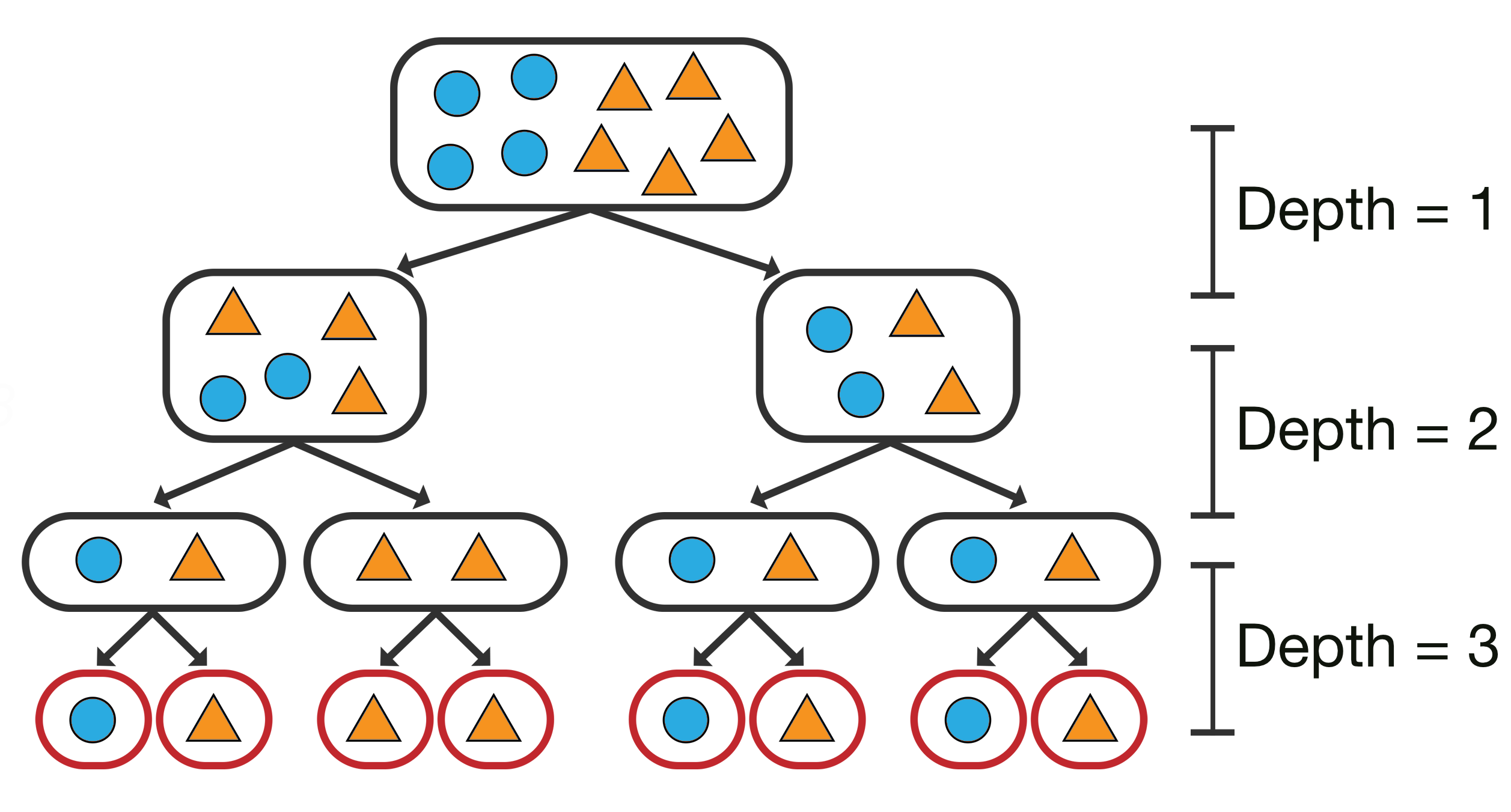
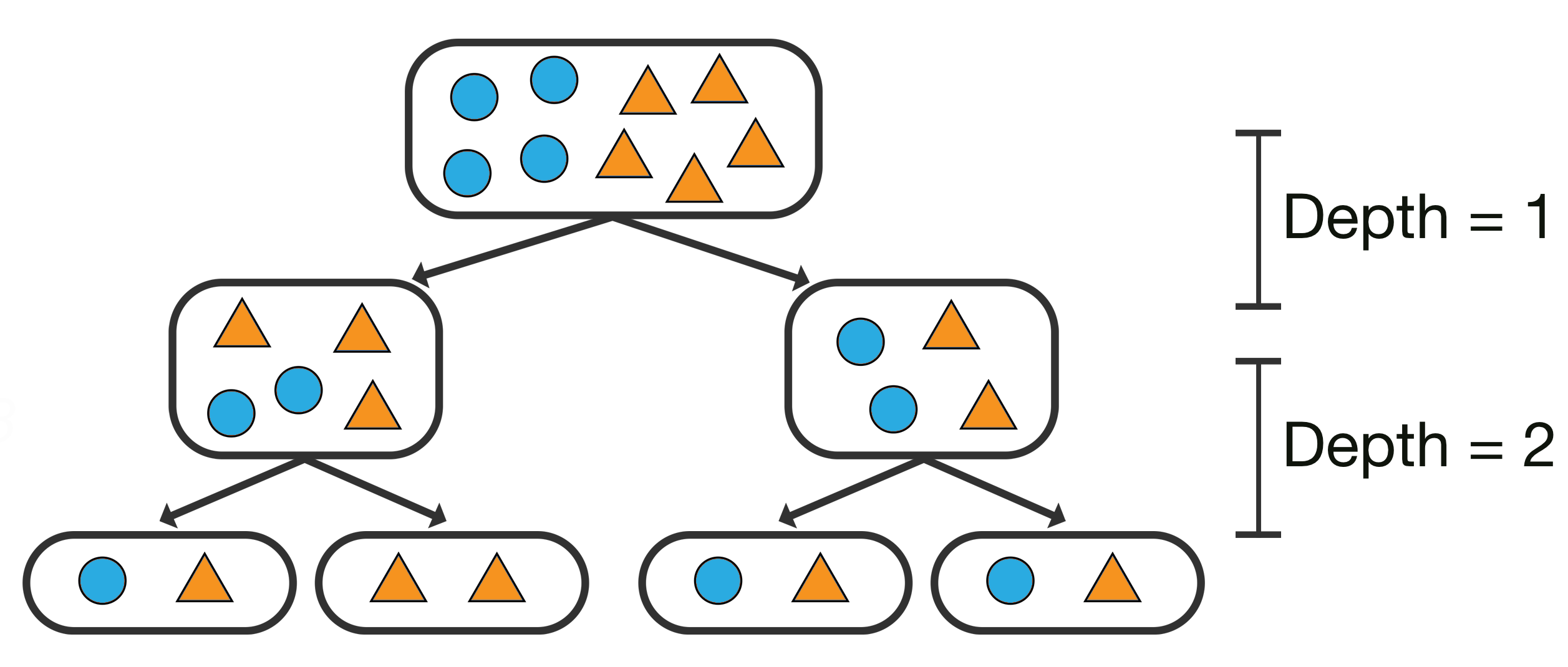
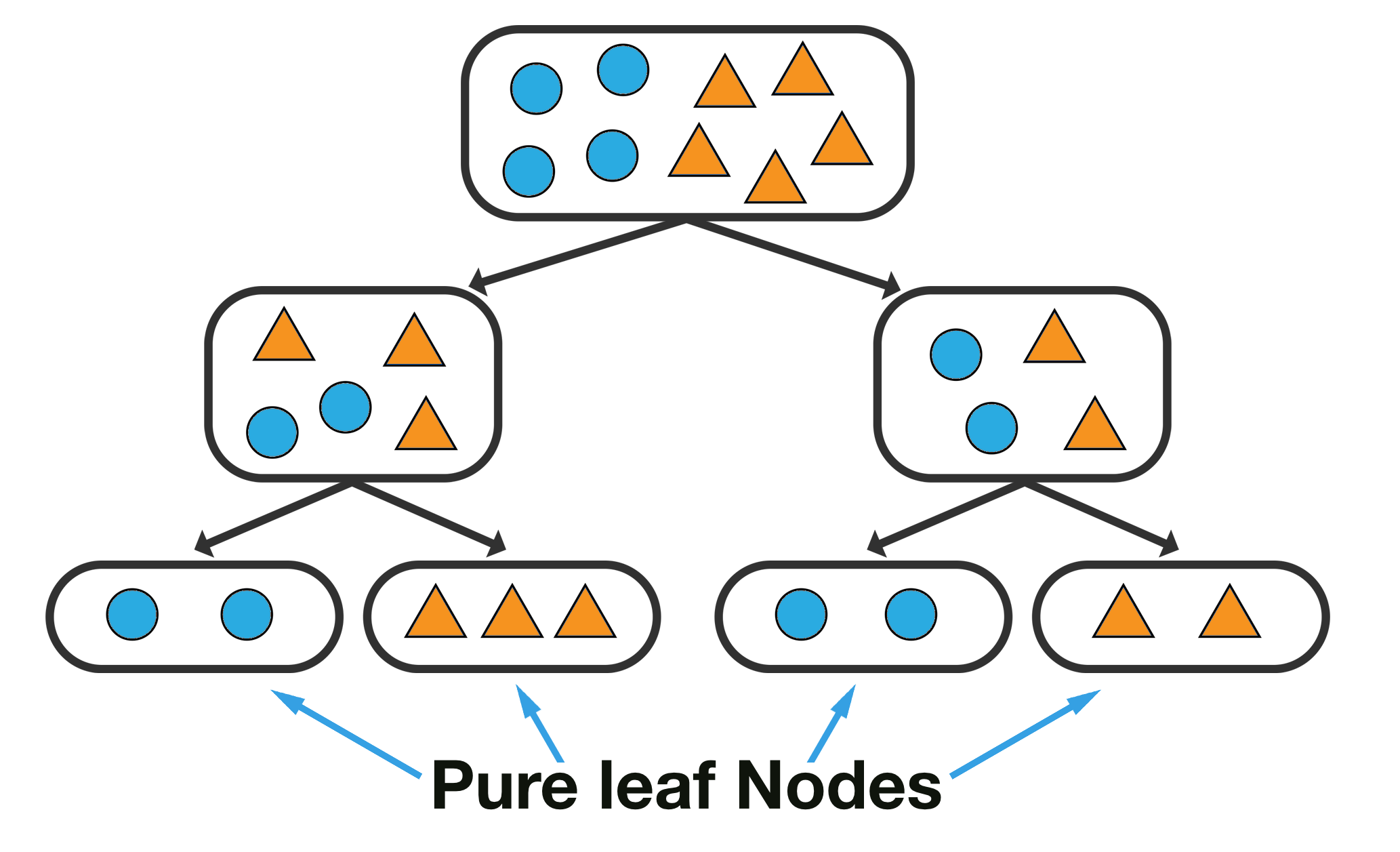
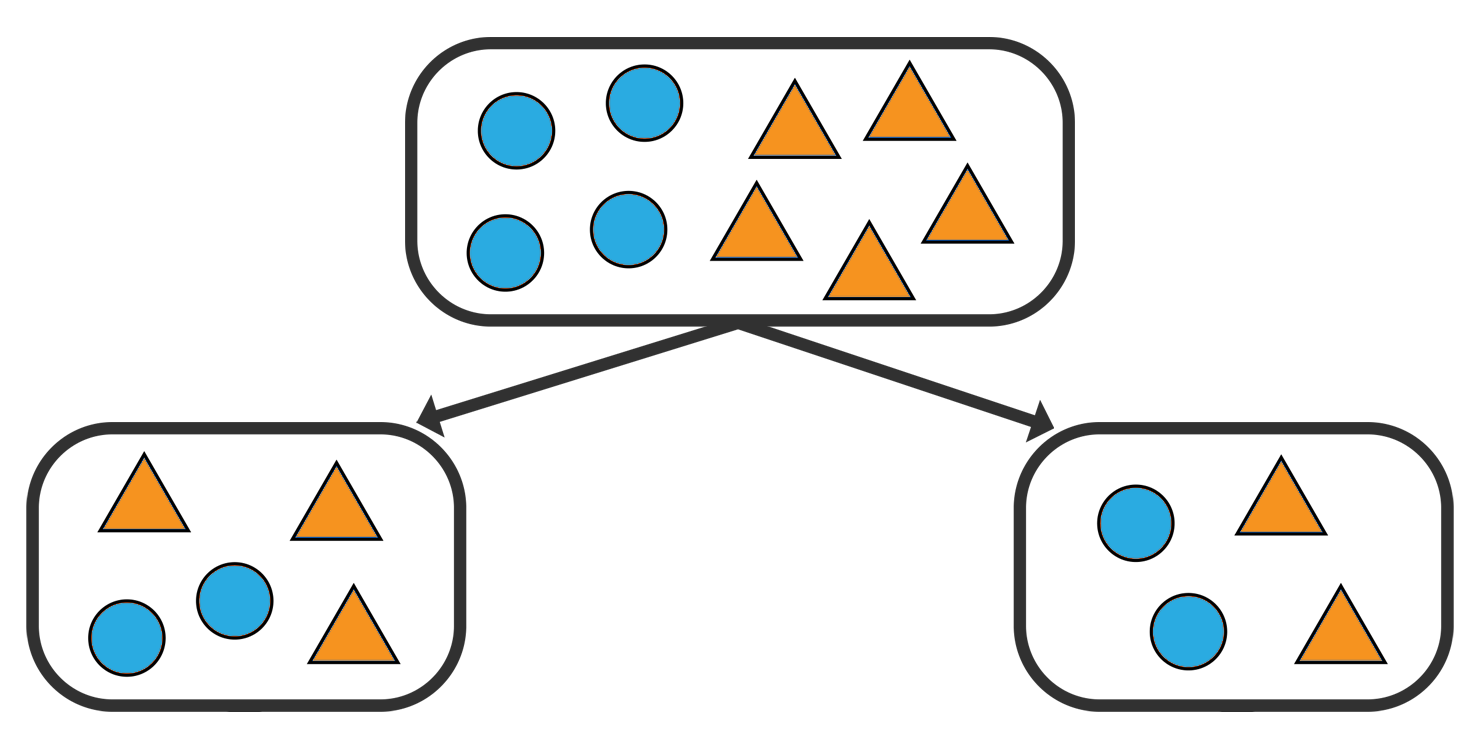
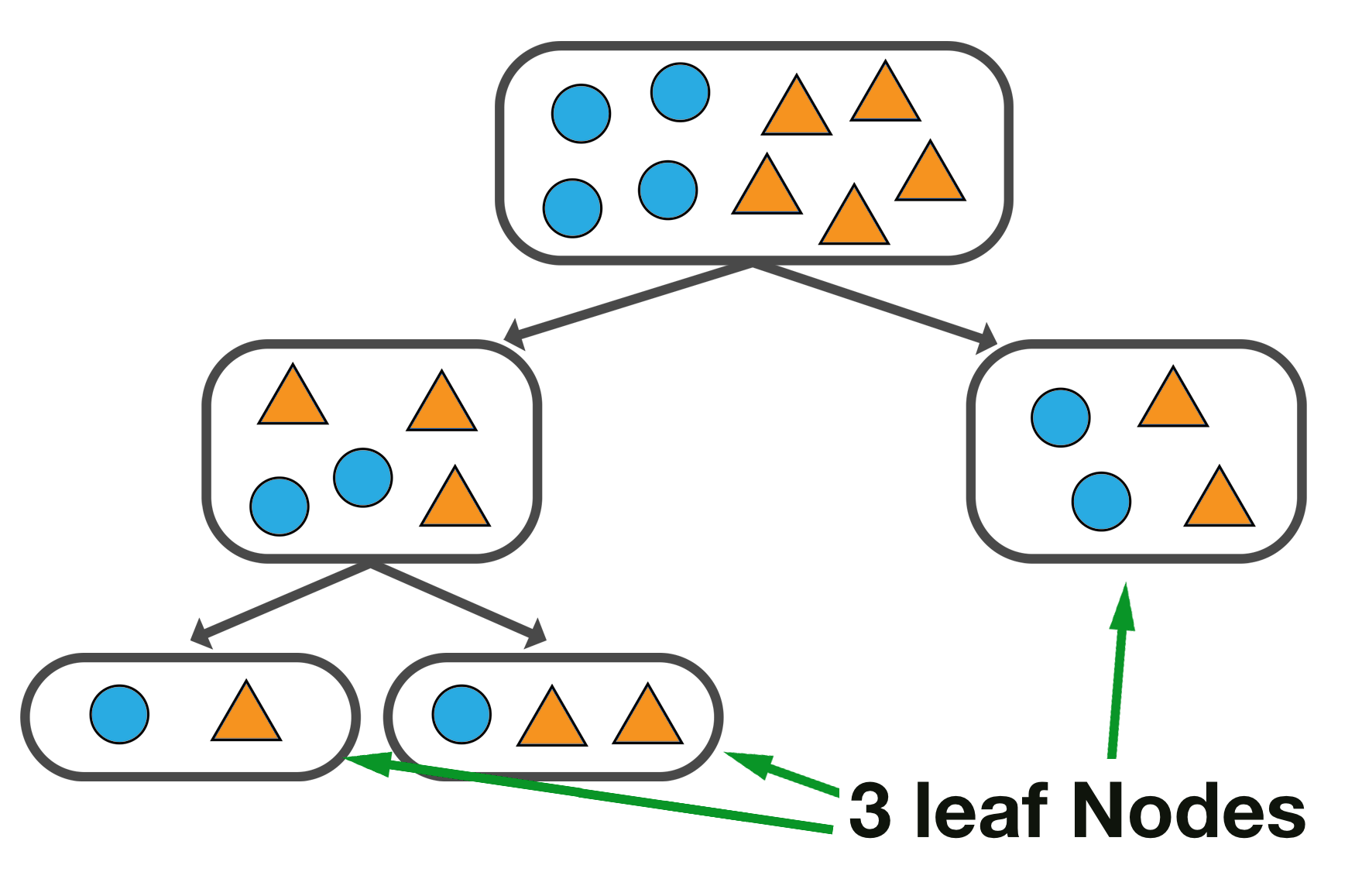
Comments
Post a Comment